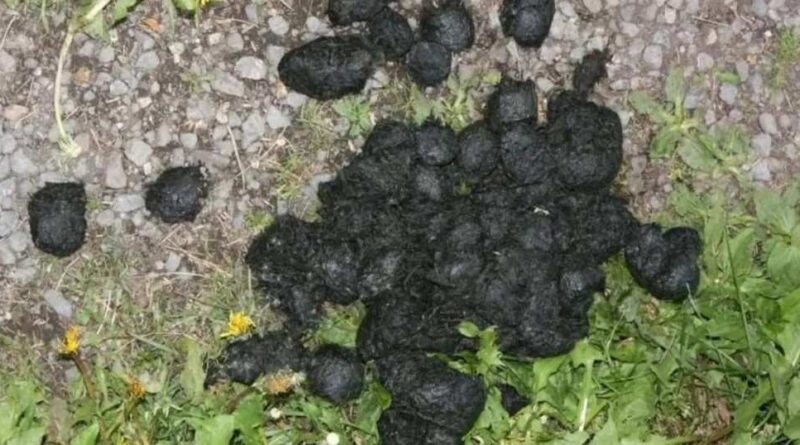Armadillo Poop : Interesting Facts
Armadillo Poop: A Fascinating Study
Armadillos are unique creatures with armor-like shells and nocturnal habits. These elusive creatures, native to the Americas, spend their nights scavenging for food like insects, grubs, and beetle larvae. Their burrowing behavior leaves behind fecal matter or poop that’s log-shaped, about an inch long, and often contains insect parts, twig pieces, or soil. If you find small, cylindrical shapes with insect exoskeletons in your yard, you’re likely tracking an armadillo’s diet and burrowing activities. These backyard visitors often leave scat near their burrows, flower beds, or gardens, helping us study their habits, migration patterns, and even their habitat preferences.
Although not as glamorous as other animals like foxes or domesticated pets, studying armadillo poop offers valuable insight into their diet and behavior. They dig holes to extract their meals, especially earthworms, ants, and termites, which are their primary food sources. Their presence can cause damage to the ground as they scratch and sniff around, searching for a meal. If you notice these activities in your backyard or property, it’s a sign that these wild animals have made themselves at home, often using your space as a toilet area. Though their scavenging can be damaging to your yard, observing their poop offers valuable information about their movements and behavior.
Understanding Armadillo Biology
Diet and Digestive System: A Peek into Their Diet
Armadillos are omnivores and feed on a variety of foods, including insects, small vertebrates, plants, and fruits. Their specialized digestive tract allows them to extract essential nutrients from their meals. With a long, muscular tongue, they can easily catch insects, while their powerful sense of smell helps them locate food even when hidden underground. They consume a large amount of food each day, which is why their diet often includes tough materials like cellulose and chitin from insect exoskeletons.
Their distinct digestive system is unique, with a stomach divided into two compartments. The simple stomach stores food, while the second part acts as a fermentation chamber, where bacteria help break down these tough materials. As a result, armadillo feces typically appear as small, cylindrical pellets, about 1-2 cm in length, and are dark brown or black with a shiny appearance. These small piles of poop are often found near their burrows or along their travel routes, revealing the nutrient extraction process that even their pups rely on for survival.
Identifying Armadillo Poop

credit:https://critterstop.com
Visual Characteristics
Armadillo excrement is usually cylindrical with a tapered end, measuring about 1-2 inches in length and 1/2-1 inch in diameter. The color of the poop varies depending on their diet, often ranging from deep brown to pale brown, sometimes even showing a greenish-brown hue. Its texture can be firm and dry, especially if they’ve been eating insects, but may appear softer when they consume soft foods. This variation in poop can help identify what the armadillo has been eating recently.
Identifying Armadillo Scat
To spot armadillo skat, look for small piles of scattered poop, often found where armadillos defecate in the same area repeatedly. These piles of poop may contain remnants of insects, plant material, and other food items, reflecting their omnivorous diet of a diverse array of plants and small animals. When examining armadillo feces, always wear gloves and avoid direct contact, as their skat can carry diseases and parasites. After handling, make sure to wash hands thoroughly. If the scat is near your home, contacting a wildlife removal expert can help safely and effectively remove it from your vicinity.
Habitats and Behavior
Where Armadillos Leave Their Mark
Armadillos are found in a variety of habitats, including forests, grasslands, and even deserts. They prefer areas with loose, sandy soil that makes digging easier. These creatures are commonly found in the southern United States, Mexico, Central America, and parts of South America. In these regions, their poop can be spotted near burrows and areas where they forage for food. Each habitat provides the right conditions for armadillos to thrive and leave their distinct scat behind.
Armadillo Foraging Patterns and Poop
Armadillos are nocturnal and omnivorous, foraging for insects, small animals, and plants with a heightened sense of smell. They use their powerful claws to dig holes and a long adhesive tongue to catch their prey. This foraging behavior often leaves armadillo scat near burrows and foraging areas, with poop that is cylindrical, about 1 to 2 inches in length, and dark in color. Though their poop may resemble rabbit or deer droppings, observing their unique behaviors and habitats can help identify these fascinating creatures in their ecosystem.
Health and Safety Concerns
Health Risks
Armadillo poop can carry diseases and parasites, posing risks to both humans and animals. One major concern is leprosy (also known as Hansen’s disease), which humans can contract through contact with their droppings. Other dangers include salmonella, E. coli, and other bacterial infections that can cause nausea, vomiting, diarrhea, and fever. Additionally, roundworms and tapeworms found in their poop can lead to infection if accidentally ingested by humans or pets. Taking proper precautions around armadillo poop, like avoiding direct contact, can help prevent these health issues.
Safe Ways to Handle Armadillo Poop
To minimize the risk of contracting diseases or parasites from armadillo poop, it’s important to handle it safely. Always wear gloves and a mask when cleaning the droppings to avoid breathing in harmful dust particles. Use a rake to gather the poop, and place it in a sealed bag or container for proper disposal. Afterward, be sure to wash your hands thoroughly with soap and water to prevent the spread of bacteria. If you notice symptoms like fever, diarrhea, or vomiting after handling, seek medical attention immediately. Following these precautions can greatly reduce health risks.
Conservation and Coexistence
Protecting Armadillo Populations
Armadillos play an important role in maintaining healthy ecosystems. Their presence contributes to a balanced and healthy environment, but they are susceptible to threats like habitat loss, hunting, and other human activities. To protect armadillo populations, it’s essential to preserve their natural habitats and limit harmful practices like excessive trapping. Implementing and following regulations can help ensure the long-term survival of these unique animals and protect their role in nature.
Interactions Between Humans and Armadillos

Though armadillos have the unique ability to roll into a ball when threatened, they can also carry diseases that may be transmitted to humans. It’s important to exercise caution when interacting with them by wearing gloves and washing hands after handling any droppings or contact. Armadillos can cause damage to gardens and lawns by digging for food, but this can be prevented using physical barriers or repellents. Ensuring responsible interactions and supporting conservation efforts can help protect these unique animals and promote a healthy, diverse environment for the species and their ecosystems.
Armadillo Poop in Popular Culture
Myths and Misconceptions
Many myths and misconceptions surround armadillo poop, especially in popular culture, where some believe it holds a mystical power or acts as a good luck charm in certain cultures. However, there is no scientific evidence to support these claims. Instead, it’s crucial to understand the facts. For instance, some believe that armadillo feces can be poisonous or lead to leprosy, but while armadillos are linked to this disease, it is not directly transmitted through their feces. It’s still crucial to refrain from handling it and to thoroughly wash your hands after any possible contact.
Armadillos also play an important role in the ecosystem. They eat a variety of insects, like ants and termites, which helps control pest populations. Their digging also spreads essential nutrients that benefit other animals and plants. Though they may not seem glamorous, understanding these facts helps us appreciate the important part they play in the natural world.
Research and Studies
Scientific Research
Research into armadillo feces provides valuable insights into their diets and habitats. The composition and characteristics of their droppings are quite unique, often having a hard, cylindrical shape with a segmented texture, which makes it easy for scientists to identify their presence in various ecosystems. By analyzing the contents of their poop, researchers can determine the types of insects and small animals armadillos consume, offering a better understanding of their role in local environments. These studies also provide valuable information that helps in developing strategies for managing populations of both armadillos and other animals in their surroundings.
Citizen Science Projects
In citizen science projects like Armadillo Watch, members of the public play a crucial role in collecting and analyzing armadillo poop. These projects allow local communities to gather valuable data about the distribution and abundance of armadillos in different regions. By providing fecal samples, participants offer insights into the diets and behaviors of these animals. This scientific research helps researchers better understand armadillo ecology and behavior, leading to more effective conservation strategies. For example, by reporting sightings and contributing to analysis, the public helps create a clearer picture of armadillo populations and their impact on the environment.
Cleaning Up Armadillo Poop
Armadillo poop can potentially carry diseases, so it’s important to handle it with care. Homeowners should take proper precautions when cleaning it up. Always wear gloves and a mask to minimize direct contact with the feces. Use a shovel to pick it up and place it in a plastic bag. Make sure to dispose of the waste in a sealed container to prevent contamination. Afterward, wash your hands thoroughly with soap and water to ensure cleanliness and safety. Following these steps can help reduce any health risks from coming into contact with armadillo waste.
Frequently Asked Questions
What Armadillo Poop Looks Like?
Armadillo poop usually resembles small, cylindrical pellets, with a hue that can differ depending on their diet. The color typically ranges from brown to dark, and it’s often found in scattered piles near their burrows or along the trails where they roam. Since armadillos have varied diets, the exact appearance of their droppings may change, but this general look is common in most places they inhabit.
What precautions should be taken when handling armadillo feces?
The presence of armadillo feces can often indicate that they are burrowing near homes or other structures. Armadillos are known to burrow under sheds, decks, and porches, so their droppings are often found in these areas. When handling their waste, always take precautions to avoid direct contact. Use gloves and a shovel to safely dispose of the feces, and wash your hands thoroughly afterward to prevent any potential health risks.
What Armadillo Scat Looks Like?
Armadillo scat is usually elongated and cylindrical, resembling small pellets. Its color can vary depending on the animal’s diet and environment, but it most commonly ranges from brown to dark brown. You’ll often find it in scattered piles near their burrows or along their travel routes, where armadillos frequently roam. The appearance of their feces can help indicate where they’ve been active in the area.
Are there any health risks associated with armadillo feces for pets?
There are potential health risks associated with armadillo feces for pets if they are exposed to it. Armadillos can carry diseases like leprosy and salmonella, which can pose a threat if your pet comes into contact with their droppings. To protect your pets, it’s important to prevent them from accessing areas where armadillo feces might be present. Keeping pets away from these areas reduces the chance of them picking up harmful bacteria or diseases.
What is the typical appearance and texture of droppings from an armadillo?
Armadillo droppings typically have a small, cylindrical shape and measure about 1-2 inches in length. Their color ranges from dark brown to black, depending on the diet. The texture is often dry and can be somewhat crumbly, sometimes containing visible bits of undigested insects or other food. This distinct appearance makes it easy to recognize armadillo droppings in areas where they are active.
How big is armadillo poop?
Armadillo scat typically appears in small pellets that are about an inch long. These droppings take the form of compact, cylindrical pieces. Due to their size and shape, armadillo pellets are easy to spot in areas where these animals are active.
Do armadillos bury their poop?
Armadillos do not typically bury their waste like some other animals, such as woodchucks or minks. Instead, they usually throw their excrement in scattered piles around their territory. This behavior can help settle any disputes with other armadillos by marking their territory. However, covering their poop might help protect it from predators, but it is not a common practice for them.
What does armadillo poop smell like?
Armadillo poop can have a strong and often nasty smell. This odor is noticeable, especially if you have easily stepped in it while walking in your backyard. The brown, inch-long pellets may contain various parts of insects and other food they have digested, making the smell even more difficult to ignore. Their droppings are often found near burrowing sites and in groups, and they can be quite a hassle to clean up due to the smell.
What if my dog eats armadillo poop?
If your dog eats armadillo feces, there are some health risks to be aware of. Armadillo droppings can carry potential diseases, including leprosy and salmonella, which can be harmful to pets. When dogs come into contact with these droppings, they may be exposed to these harmful diseases. To prevent this, it’s important to monitor your dog and keep them from accessing areas where armadillo droppings are present. If your dog does eat armadillo poop, it’s a good idea to consult your vet for advice.
Is armadillo poop toxic to dogs?
Armadillo poop can indeed be risky for pets like dogs and cats. This fecal matter can carry harmful diseases such as salmonella and tapeworms, which may affect your animal if ingested. These diseases are transmitted through contact with the droppings, making it important for pet owners to be cautious. If a dog or cat were to bite or consume armadillo feces, it could lead to serious health issues. Keeping your pets away from areas where armadillos are active can help reduce this risk.
Where will you find armadillo poop in the back garden?
If you’re trying to find armadillo poop in your back garden, keep an eye out for signs of this animal. You may discover poop near entrances to their burrows or in areas where you think an armadillo might be roaming. If you notice more than one spot, it could indicate a pest problem. Regularly peek around places like flower beds or under structures where they might hide. If you suspect their presence, looking for their droppings is a great way to confirm it.



